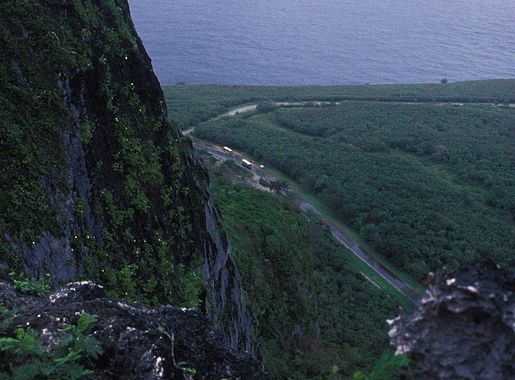
Koblerville: A Gem in the Northern Mariana Islands
Discover the tranquil beauty of Koblerville in the Northern Mariana Islands, where pristine beaches, rich culture, and lush landscapes create a perfect tropical escape.
Koblerville is a tranquil village located on the island of Saipan in the Northern Mariana Islands, a U.S. commonwealth in the Western Pacific. Known for its serene beaches and lush landscapes, Koblerville offers a peaceful retreat for tourists. Its location makes it a perfect spot for those looking to escape the hustle and bustle of city life and immerse themselves in nature. One of the main attractions in Koblerville is its beautiful coastline. Visitors can enjoy pristine beaches with clear blue waters, perfect for swimming, snorkeling, and sunbathing. The area is also rich in marine life, making it an excellent place for diving enthusiasts. The coral reefs around the island are teeming with colorful fish and other sea creatures, offering a spectacular underwater experience. In addition to its natural beauty, Koblerville has a rich cultural heritage. The local community is warm and welcoming, and tourists can learn about the traditional Chamorro culture through various local events and festivals. The village is also home to several historical sites, including remnants from World War II, which provide a glimpse into the island's past. Koblerville's landscape is dotted with scenic spots perfect for hiking and exploring. The lush greenery and tropical climate make it a haven for nature lovers. Whether you're wandering through the local markets, enjoying a traditional meal, or simply relaxing on the beach, Koblerville offers a unique and unforgettable experience for every traveler.
Local tips in Koblerville
- Visit during the dry season, from December to June, for the best weather and outdoor activities.
- Rent a car to explore the island at your own pace, as public transportation is limited.
- Don't miss the local markets for fresh produce and traditional handicrafts.
- Try local dishes like kelaguen and red rice for an authentic culinary experience.
- Respect local customs and traditions, especially when visiting cultural sites and participating in festivals.
Koblerville: A Gem in the Northern Mariana Islands
Koblerville is a tranquil village located on the island of Saipan in the Northern Mariana Islands, a U.S. commonwealth in the Western Pacific. Known for its serene beaches and lush landscapes, Koblerville offers a peaceful retreat for tourists. Its location makes it a perfect spot for those looking to escape the hustle and bustle of city life and immerse themselves in nature. One of the main attractions in Koblerville is its beautiful coastline. Visitors can enjoy pristine beaches with clear blue waters, perfect for swimming, snorkeling, and sunbathing. The area is also rich in marine life, making it an excellent place for diving enthusiasts. The coral reefs around the island are teeming with colorful fish and other sea creatures, offering a spectacular underwater experience. In addition to its natural beauty, Koblerville has a rich cultural heritage. The local community is warm and welcoming, and tourists can learn about the traditional Chamorro culture through various local events and festivals. The village is also home to several historical sites, including remnants from World War II, which provide a glimpse into the island's past. Koblerville's landscape is dotted with scenic spots perfect for hiking and exploring. The lush greenery and tropical climate make it a haven for nature lovers. Whether you're wandering through the local markets, enjoying a traditional meal, or simply relaxing on the beach, Koblerville offers a unique and unforgettable experience for every traveler.
When is the best time to go to Koblerville?
Iconic landmarks you can’t miss
Banzai Cliff Monument
Discover the breathtaking views and poignant history of Banzai Cliff Monument, a must-visit destination in Saipan, Northern Mariana Islands.
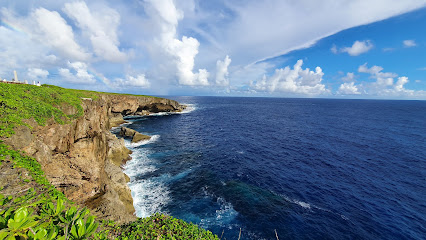
The Grotto
Discover the enchanting beauty of The Grotto in Saipan, a breathtaking underwater cave perfect for snorkeling and unforgettable nature experiences.
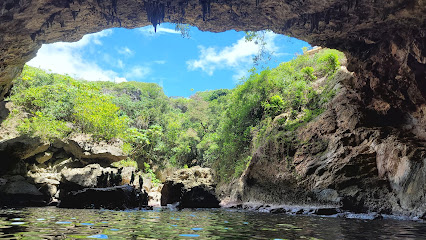
American Memorial Park
Discover the peaceful beauty and rich history of American Memorial Park in Saipan, a serene tribute to the sacrifices of World War II veterans.
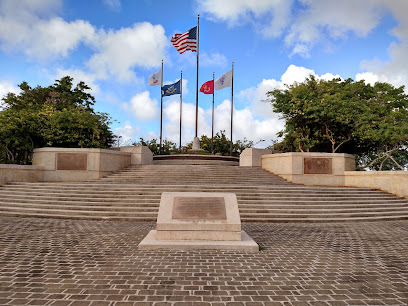
I Love Saipan
Explore I Love Saipan, your go-to souvenir store in Garapan for unique gifts and local artisan products that reflect the beauty of the Northern Mariana Islands.
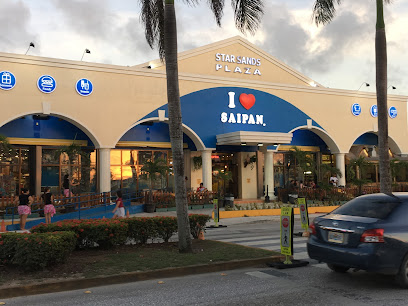
The Shack, Saipan
Experience the flavors of Saipan at The Shack, where local ingredients meet international cuisine in a beautiful coastal setting.
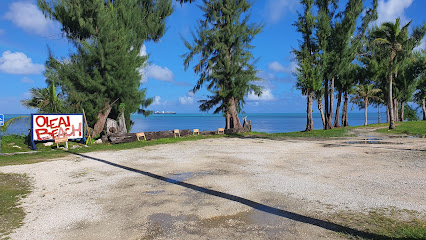
Suicide Cliff
Explore the breathtaking views and rich history at Suicide Cliff, a must-see historical landmark in Saipan, Northern Mariana Islands.
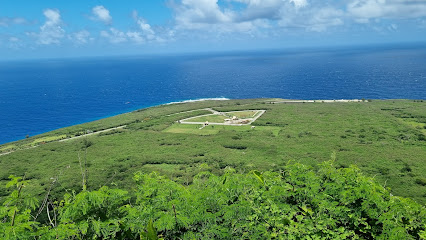
Regal Saipan
Discover the ultimate movie experience at Regal Saipan, where the latest films meet comfort and entertainment in the heart of the Northern Mariana Islands.
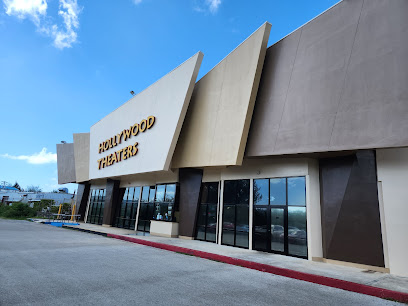
Godfather's Bar
Experience the vibrant nightlife of Saipan at Godfather's Bar, where refreshing drinks and a lively atmosphere await you.
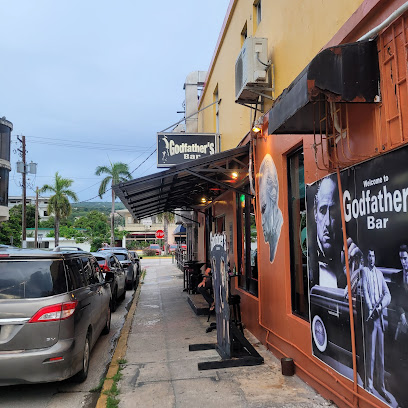
Loco Taco
Discover authentic Mexican cuisine at Loco Taco in Garapan, Saipan, where vibrant flavors meet a lively self-service dining experience.
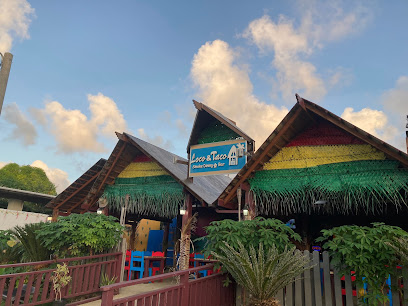
Himawari Restaurant
Discover delicious local and international cuisine at Himawari Restaurant in Garapan, a must-visit culinary destination in Saipan.
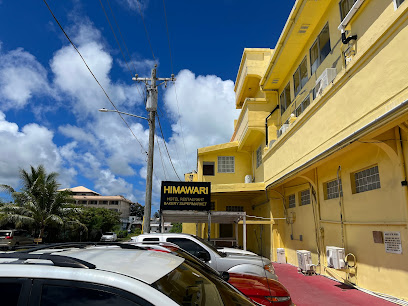
Cafe MangoSix
Discover the tropical charm of Café MangoSix in Saipan, where delightful drinks and local flavors create unforgettable moments.
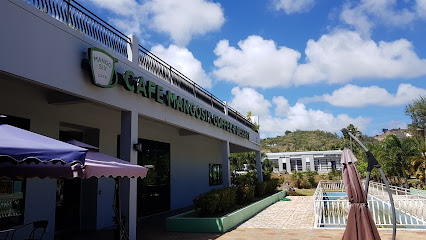
Oleai Beach Bar & Grill
Discover the flavors of the Northern Mariana Islands at Oleai Beach Bar & Grill, where delicious food meets breathtaking beach views in Saipan.

Great Harvest Bread Co.
Experience the artistry of local baking at Great Harvest Bread Co. in Saipan, where fresh ingredients meet culinary tradition in every bite.
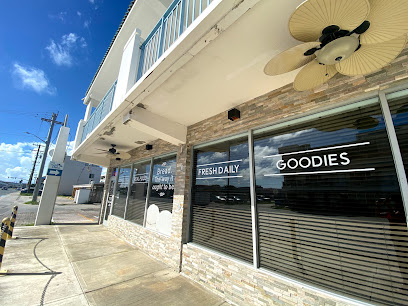
The Angry Penne
Experience the authentic taste of Italy at The Angry Penne in Saipan, where every meal is a celebration of flavor and warmth.
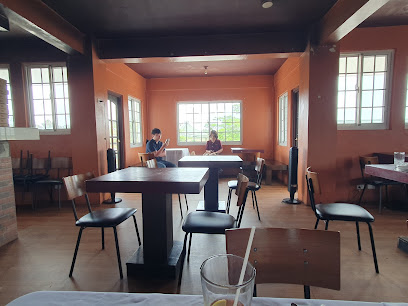
Naked Fish Bar & Grill
Experience the best of Saipan's culinary scene at Naked Fish Bar & Grill, where delicious food and live music create an unforgettable atmosphere.

Unmissable attractions to see
Saipan World Resort
Experience the ultimate tropical getaway at Saipan World Resort—luxury accommodation, stunning beaches, and endless adventures await you.

The Grotto
Explore the stunning underwater landscapes of The Grotto in Saipan, a natural wonder perfect for snorkeling and diving enthusiasts.
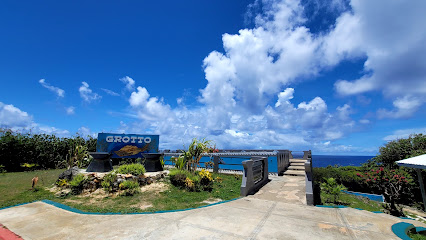
Suicide Cliff
Discover the breathtaking views and poignant history at Suicide Cliff in Saipan, a must-visit landmark that embodies the spirit of the Northern Mariana Islands.

Garapan
Experience the vibrant culture, stunning beaches, and rich history of Garapan, the heart of Saipan in the Northern Mariana Islands.
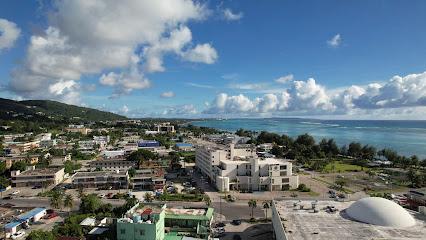
Essential places to dine
Surf Club Saipan Restaurant
Experience fresh seafood and local flavors at Surf Club Saipan Restaurant with stunning ocean views in Northern Mariana Islands.
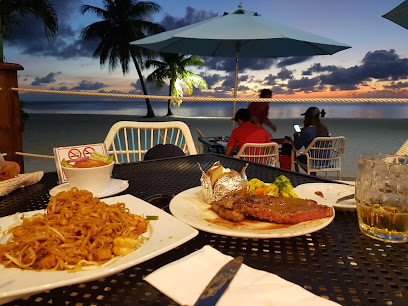
The Shack, Saipan
Experience the best of Saipan's dining scene at The Shack - your go-to spot for breakfast and lunch delights amidst beautiful coastal views.
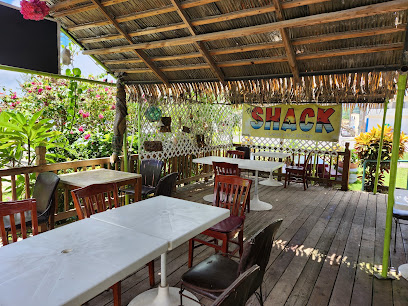
Yewon Restaurant
Experience an unforgettable culinary journey at Yewon Restaurant in Saipan, where local flavors meet international cuisine in a welcoming atmosphere.
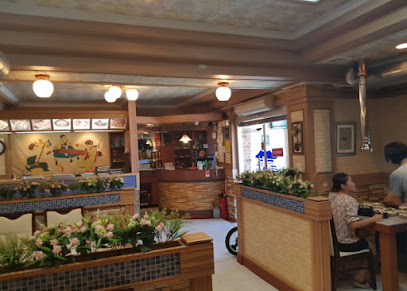
J's Restaurant
Discover affordable culinary delights at J's Restaurant in Capitol Hill, Saipan - where local flavors meet international cuisine.
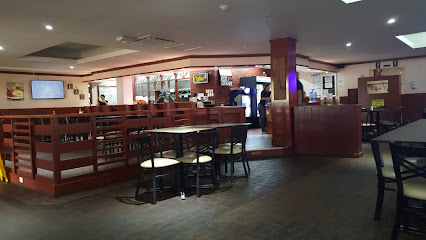
Himawari Restaurant
Discover authentic flavors at Himawari Restaurant in Garapan, Saipan – where local ingredients meet culinary artistry.
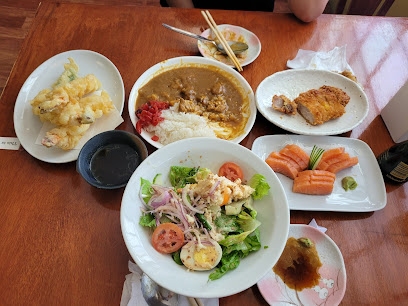
Oleai Beach Bar & Grill
Experience tropical flavors at Oleai Beach Bar & Grill - where every meal is accompanied by stunning ocean views.

Great Harvest Bread Co.
Discover fresh flavors at Great Harvest Bread Co., where artisanal breads and delightful pastries meet a welcoming atmosphere in Saipan.
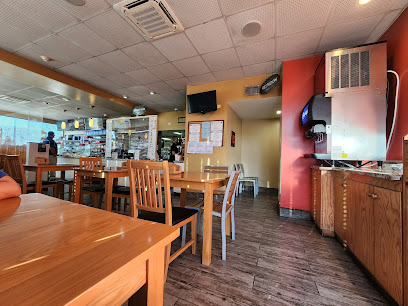
360° Restaurant
Experience exquisite dining at Saipan's 360° Restaurant with stunning views and a delightful fusion of local and international cuisine.
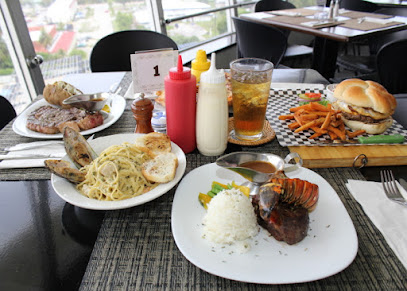
ZOOM Cafe
Discover the vibrant flavors of Saipan at ZOOM Cafe - where culinary excellence meets stunning views in a cozy atmosphere.
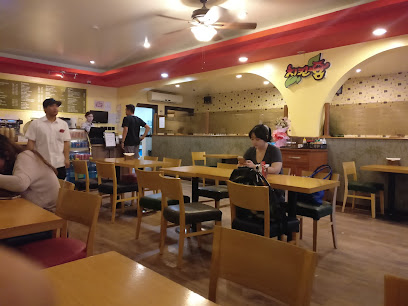
The Magellan
Experience the rich culinary heritage of Saipan at The Magellan - where local flavors meet international cuisine in a vibrant setting.
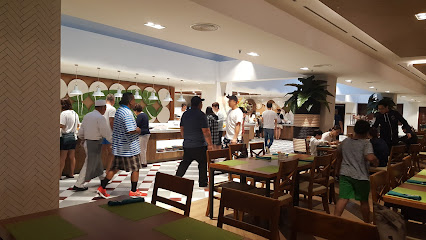
West Coast Restaurant
Experience family-friendly dining at West Coast Restaurant in Saipan – where local flavors meet international cuisine.
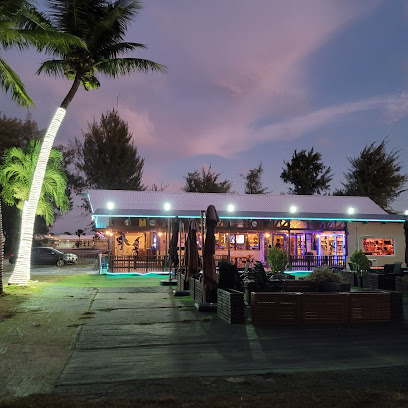
Gentle Brook Cafe
Discover delightful flavors at Gentle Brook Cafe in Saipan – where local ingredients meet international cuisine in a cozy setting.
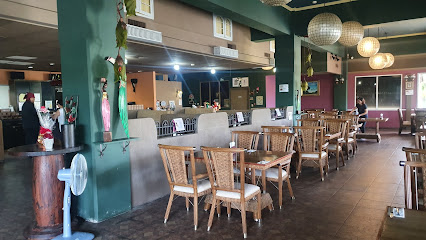
Korean House Restaurant
Experience authentic Korean flavors at Saipan's beloved Korean House Restaurant - a must-visit culinary destination for every traveler.
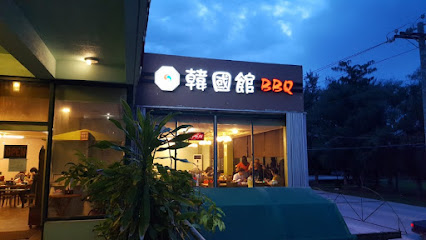
Country House Restaurant
Discover authentic flavors at Country House Restaurant in Garapan, where local cuisine meets exceptional hospitality.
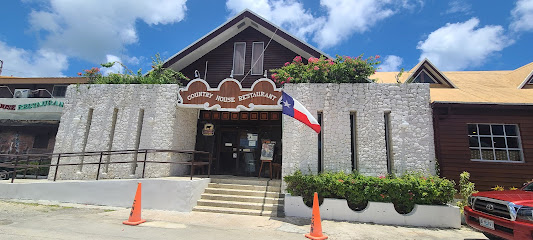
Garlic Grotto Restaurant
Discover the rich flavors of Saipan at Garlic Grotto Restaurant – a culinary treasure known for its garlic-infused delicacies and inviting atmosphere.
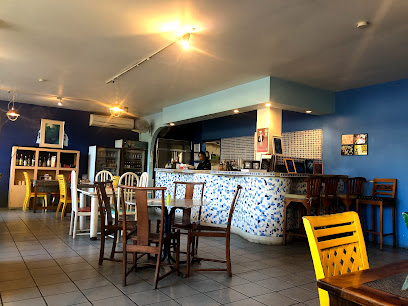
Markets, malls and hidden boutiques
I Love Saipan
Explore the vibrant charm of I Love Saipan, your go-to spot for unique souvenirs and local clothing in the heart of Garapan.

I Love Saipan Outlet Store, Middle Road
Explore the I Love Saipan Outlet Store for unbeatable prices on clothing, home goods, and local treats in the heart of Saipan.
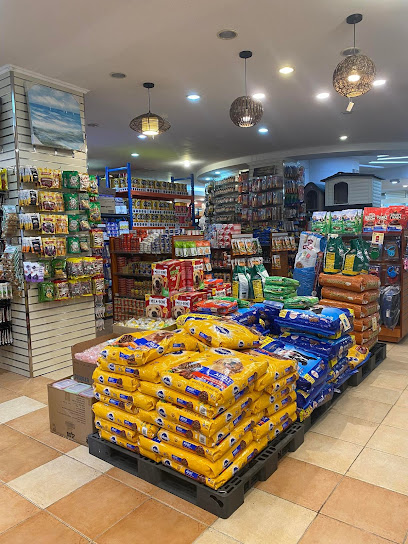
New Sara Market
Explore the vibrant selection of fresh produce and local delicacies at New Sara Market, a culinary hub in Saipan's Capitol Hill.
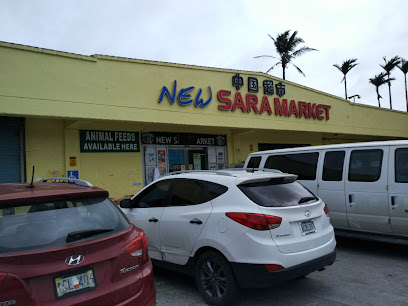
Happy Market
Explore the vibrant offerings of Happy Market, your go-to grocery store in Saipan for local flavors and essentials.

670 Rock Steady Shop
Explore the vibrant fashion scene at 670 Rock Steady Shop in Saipan, offering a unique selection of clothing and accessories that capture local culture.
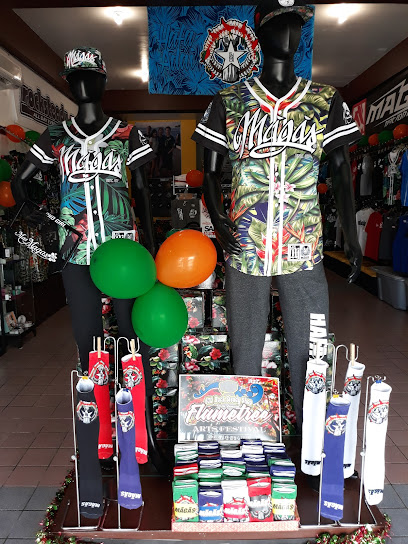
Brother's Market
Explore the vibrant flavors of Saipan at Brother's Market, your go-to grocery store for fresh produce, local snacks, and culinary treasures.
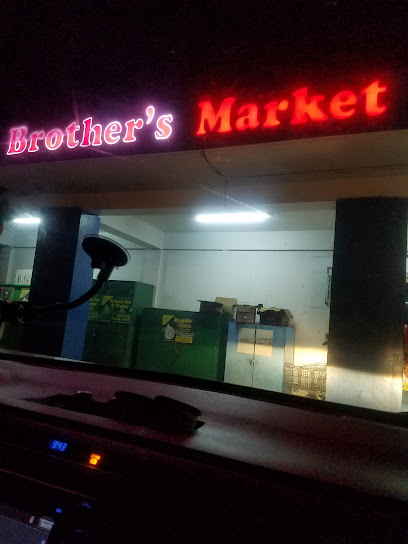
ABC Stores #702
Explore the heart of Saipan at ABC Stores #702, your convenient stop for local souvenirs and everyday essentials.
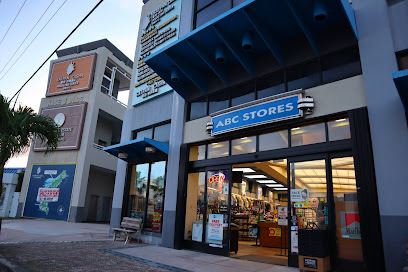
Capitol Hill Market
Explore Capitol Hill Market in Saipan for a unique local shopping experience, offering fresh produce, local delicacies, and a taste of island life.
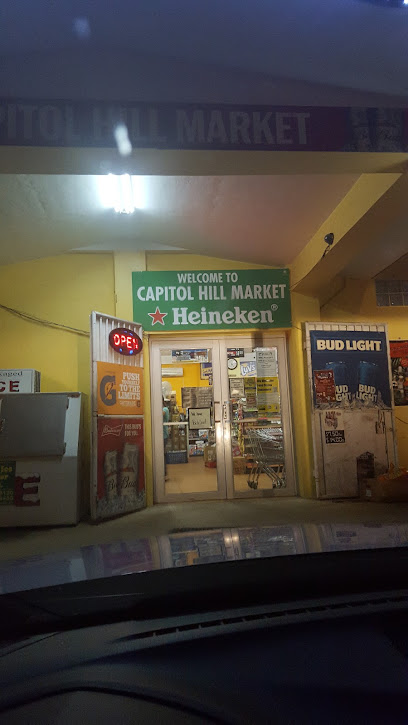
Rising Supermarket
Explore Rising Supermarket in Saipan for a delightful blend of local and international grocery offerings that cater to every taste.
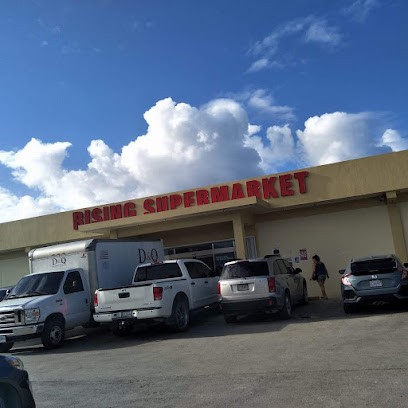
Mobil Koblerville Service Station
Discover convenience at Mobil Koblerville Service Station, your essential stop for fuel, snacks, and travel necessities in beautiful Saipan.

Cheng Cheng Market
Discover the flavors of Saipan at Cheng Cheng Market, where local produce and unique products await every curious traveler.

Hybrid Shop
Explore the Hybrid Shop in Garapan, Saipan for unique souvenirs, stylish fashion, and quality printing services in a vibrant shopping atmosphere.

Bargain center
Discover unbeatable deals at the Bargain Center, Saipan's go-to destination for stylish clothing and accessories at affordable prices.
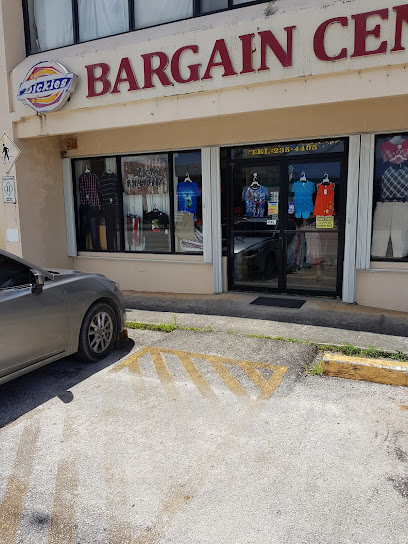
Made In Saipan
Discover the heart of Saipan through handmade crafts at Made In Saipan, where local artistry meets the spirit of the islands.
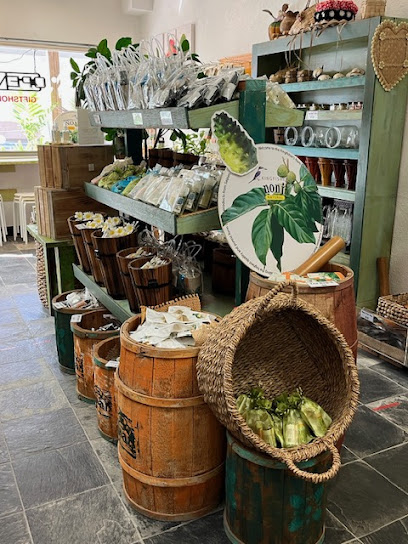
Next Level Thrift & Consignment Shop
Explore a world of unique vintage finds at Next Level Thrift & Consignment Shop in Saipan, where every visit promises affordable treasures and hidden gems.

Essential bars & hidden hideouts
Godfather's Bar
Discover the vibrant nightlife at Godfather's Bar in Garapan, Saipan, where friendly vibes and live music await you.
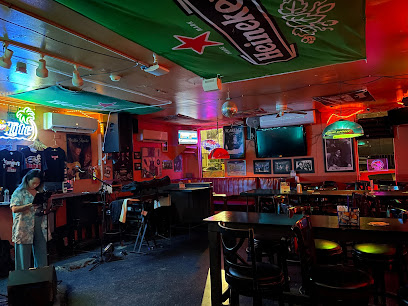
Oleai Beach Bar & Grill
Discover the perfect blend of delicious cuisine and breathtaking ocean views at Oleai Beach Bar & Grill in Saipan.
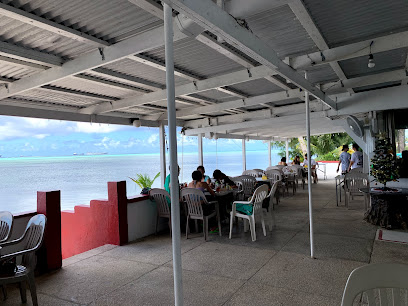
True North Bar And Grill
Experience the vibrant flavors and lively atmosphere of True North Bar And Grill in Garapan, Saipan, perfect for food lovers and socializers alike.
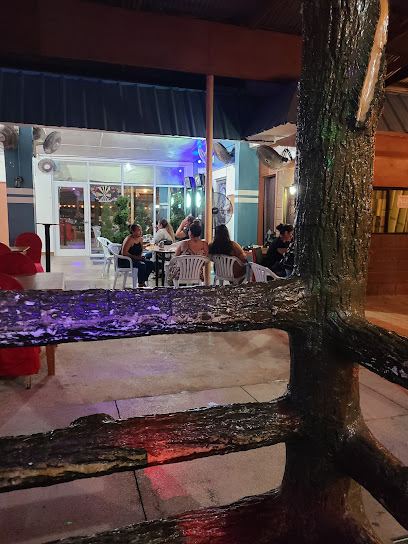
Zaabder Thai Restaurant
Discover the flavors of Thailand in Saipan at Zaabder Thai Restaurant, where authentic dishes and a cozy atmosphere await you.
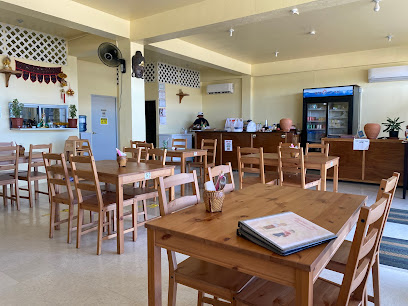
Safehouse Bar
Experience the vibrant nightlife of Saipan at Safehouse Bar, where great drinks and a lively atmosphere await you.
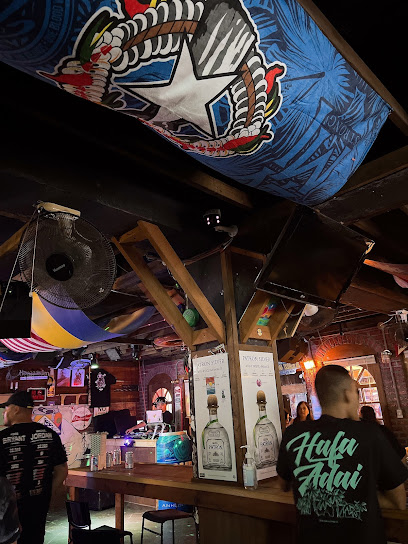
Tapped Out
Experience the vibrant atmosphere and delicious craft brews at Tapped Out, a must-visit brewpub in Saipan's Garapan.
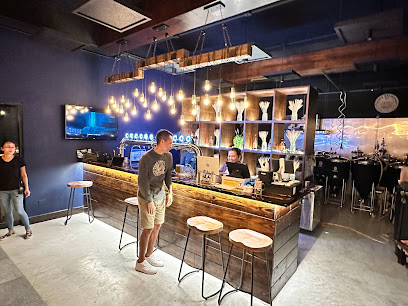
Joe's Bar and Steak House
Experience the vibrant flavors and lively atmosphere at Joe's Bar and Steak House in Saipan, where every bite tells a story.
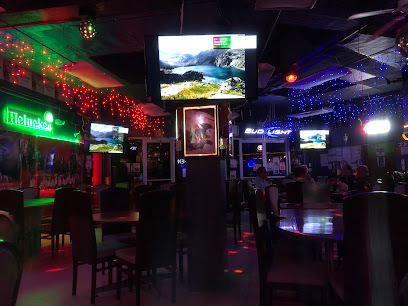
Boss Karaoke Bar
Discover the vibrant nightlife of Saipan at Boss Karaoke Bar – where every night is a celebration of music and fun!
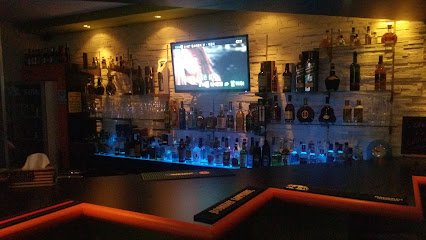
Relox Bar
Experience the vibrant karaoke scene at Relox Bar in Garapan, Saipan, for a night of music, fun, and unforgettable memories.

Last Shot Bar
Experience the vibrant atmosphere of Last Shot Bar in Saipan, where great drinks, live music, and ocean views create an unforgettable island escape.
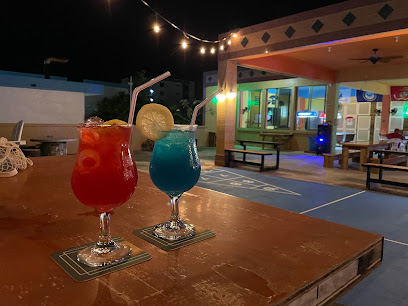
9/Eleven RestoBar
Experience the lively charm of 9/Eleven RestoBar in Saipan, where delicious food and refreshing drinks meet vibrant nightlife.

6JMS BAR & GRILL
Experience the vibrant nightlife at 6JMS Bar & Grill, where local flavors and lively atmosphere meet in the heart of Saipan.
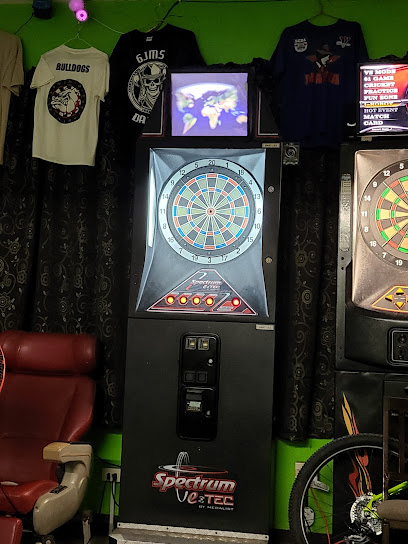
TAMBAYAN-RESTO BAR & GRILL
Experience the vibrant flavors and lively atmosphere of Tambayan Resto Bar & Grill, the perfect spot to unwind in Saipan's nightlife.
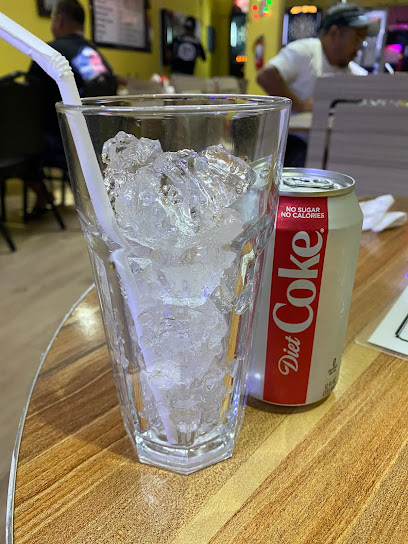
Citrine Cafe and Restaurant
Experience the vibrant flavors of Saipan at Citrine Cafe and Restaurant, where fresh ingredients and local culture meet in a delightful dining atmosphere.
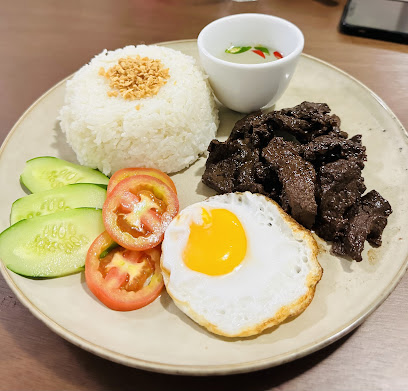
Mari Bar
Experience the vibrant nightlife of Saipan at Mari Bar, where expertly crafted cocktails meet a tropical paradise ambiance.
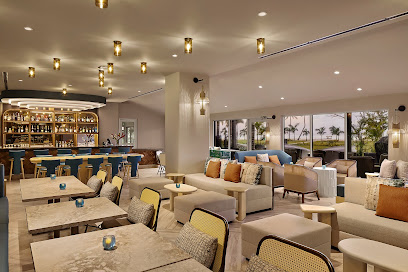
Local Phrases
-
- HelloHåfa Adai
[HAH-fah ah-DYE] - GoodbyeAdios
[ah-DYOS] - YesHao
[HOW] - NoTi
[TEE] - Please/You're welcomePor fabor
[pohr fah-BOHR] - Thank youSi Yu'os Ma'åse
[see YOO-ohs mah-AH-seh] - Excuse me/SorryDispensa
[dees-PEN-sah] - How are you?Kumusta?
[koo-MOOS-tah] - Fine. And you?Maolek. Yan ikaw?
[mah-oh-lek. yahn ee-KAHW] - Do you speak English?Kumusta ka mag-guaha i Ingles?
[koo-MOOS-tah kah mahg-GWAH-hah ee EENG-glehs] - I don't understandTi hu tungo'
[TEE hoo TUNG-oh]
- HelloHåfa Adai
-
- I'd like to see the menu, pleaseYu'us i menyu, por fabor
[YOO-oos ee MEHN-yoo, pohr fah-BOHR] - I don't eat meatTi hu difende karne
[TEE hoo dee-FEN-deh KAR-neh] - Cheers!Biba!
[BEE-bah] - I would like to pay, pleaseYu'us i pago, por fabor
[YOO-oos ee PAH-goh, pohr fah-BOHR]
- I'd like to see the menu, pleaseYu'us i menyu, por fabor
-
- Help!Ayuda!
[ah-YOO-dah] - Go away!Lågu!
[LAH-goo] - Call the Police!Tåya i Polisia!
[TAH-yah ee poh-LEE-syah] - Call a doctor!Tåya i manmagof!
[TAH-yah ee mahn-MAH-gohf] - I'm lostBåba boka
[BAH-bah BOH-kah] - I'm illAyo hu gasta
[ah-YOH hoo GAHS-tah]
- Help!Ayuda!
-
- I'd like to buy...Yu'us i kuåt...
[YOO-oos ee KWAT...] - I'm just lookingAyo lang
[ah-YOH lahng] - How much is it?Kåtu este?
[KAH-too EH-steh?] - That's too expensiveMånnge' hit este
[MAHN-geh heet EH-steh] - Can you lower the price?Båba i presio?
[BAH-bah ee PREH-syoh?]
- I'd like to buy...Yu'us i kuåt...
-
- What time is it?Fåti tiempo este?
[FAH-tee tee-EM-poh EH-steh?] - It's one o'clockMunga i lokkun
[MOONG-gah ee LOHK-koon] - Half past (10)Kåhug i (10)
[KAH-hoog ee (10)] - MorningMåsåra
[MAH-sah-rah] - AfternoonKåstuma
[KAH-stoo-mah] - EveningGåsan
[GAH-sahn] - YesterdayKåhugåna
[KAH-hoog-AH-nah] - TodayKåstuma
[KAH-stoo-mah] - TomorrowBåsena
[BAH-seh-nah] - 1Uno
[OO-no] - 2Dos
[DOHS] - 3Tres
[TREHS] - 4Kwatro
[KWAH-troh] - 5Sinqo
[SING-koh] - 6Seis
[SAYS] - 7Siete
[SYEH-teh] - 8Ocho
[OH-choh] - 9Nuebe
[NWEH-beh] - 10Dies
[DEES]
- What time is it?Fåti tiempo este?
-
- Where's a/the...?Hu fanånan i...
[hoo fah-NAH-nahn ee...] - What's the address?Fåti i direksion?
[FAH-tee ee dee-rek-SYON?] - Can you show me (on the map)?Båba i mapan?
[BAH-bah ee mah-PAHN?] - When's the next (bus)?Fåti i sigiente (bus)?
[FAH-tee ee see-GYEN-teh (boos)?] - A ticket (to ....)Un bilette (para ....)
[oon bee-LEH-teh (PAH-rah ....)]
- Where's a/the...?Hu fanånan i...
History of Koblerville
-
Koblerville, like much of the Northern Mariana Islands, has roots that trace back to the ancient Chamorro people. The Chamorros are believed to have settled in the region around 1500 BCE. Evidence of their early presence can be found in the form of latte stones, traditional stone pillars used to elevate houses, which are scattered around the island. These relics serve as a testament to the ingenuity and architectural skills of the early inhabitants.
-
In the 16th century, the Spanish Empire laid claim to the Northern Mariana Islands, including Koblerville. The Spanish influence brought significant changes to the local culture and lifestyle. The introduction of Christianity, new agricultural practices, and European architectural styles can be traced back to this colonial period. The legacy of Spanish rule is still evident in local customs, language influences, and religious practices.
-
At the turn of the 20th century, the control of the Northern Mariana Islands shifted hands from Spain to Germany and later to Japan. During the German period, economic development, particularly in copra production, was emphasized. The Japanese era saw further development, with the construction of infrastructure and the introduction of education and healthcare systems. Koblerville, like other parts of the islands, experienced rapid modernization during this time.
-
World War II brought dramatic changes to Koblerville and the Northern Mariana Islands. The islands became a strategic focal point in the Pacific theater. The Battle of Saipan in 1944 was a pivotal moment, leading to the American capture of the islands. The aftermath of the battle left a significant mark on Koblerville, with numerous war relics and memorials that serve as a reminder of the conflict and its impact on the local population.
-
After World War II, the Northern Mariana Islands, including Koblerville, became a part of the Trust Territory of the Pacific Islands under U.S. administration. In 1978, the islands entered into a political union with the United States, forming the Commonwealth of the Northern Mariana Islands (CNMI). This status provided greater self-governance and economic opportunities, allowing Koblerville to develop further while preserving its unique cultural heritage.
-
Today, Koblerville is a vibrant community that reflects a rich tapestry of historical influences. The town is known for its cultural festivals, which celebrate Chamorro traditions, Spanish heritage, and modern influences. Local landmarks, such as the Koblerville Elementary School and various churches, highlight the blend of historical and contemporary elements. The town's development continues to be shaped by its historical legacy, making it a unique destination for visitors.
Koblerville Essentials
-
Koblerville is located on Saipan, the largest island of the Northern Mariana Islands. The primary gateway to Koblerville is via Francisco C. Ada/Saipan International Airport (SPN), which is approximately 11 kilometers from Koblerville. Direct flights to Saipan are available from major cities in Asia such as Tokyo, Seoul, and Guam. From the airport, you can take a taxi or rent a car to reach Koblerville. The drive usually takes around 15-20 minutes.
-
In Koblerville, the most common modes of transportation are taxis, rental cars, and buses. Taxis are readily available and are a convenient way to get around. Renting a car allows for more flexibility, especially if you plan to explore the island extensively. Public buses operate on Saipan and connect Koblerville with other parts of the island, although the schedules can be irregular, so it's best to check in advance.
-
The official currency in the Northern Mariana Islands is the US Dollar (USD). Credit cards are widely accepted in hotels, restaurants, and larger shops. It is advisable to carry some cash for smaller establishments and local markets. ATMs are available in Koblerville and across Saipan, making it easy to withdraw cash if needed.
-
Koblerville is generally a safe destination for tourists. However, it is always wise to take standard safety precautions. Avoid walking alone at night in poorly lit areas and keep an eye on your belongings. While crime rates are low, petty theft can occur, so stay vigilant. There are no specific high-crime areas targeting tourists, but it's always best to be cautious.
-
In case of emergency, dial 911 for immediate assistance. The local police station and medical facilities are available in Koblerville. It is recommended to have travel insurance that covers medical emergencies. For minor health issues, there are pharmacies where you can purchase over-the-counter medications.
-
Fashion: Do dress modestly, especially when visiting religious or cultural sites. Avoid overly revealing clothing. Religion: Do respect local customs and traditions. When visiting religious sites, dress appropriately and show respect. Public Transport: Do be courteous and give up your seat to elderly passengers. Don’t eat or drink on public transport. Greetings: Do greet people with a smile and a friendly 'hello.' Shaking hands is common. Eating & Drinking: Do try local dishes and accept food offerings graciously. Don’t refuse hospitality, as it may be considered impolite.
-
To experience Koblerville like a local, visit local eateries and try traditional Chamorro and Carolinian dishes. Engage with the friendly locals who are often more than willing to share stories about their culture and history. Don’t miss visiting the beautiful beaches and exploring the lush landscapes. Additionally, attending local festivals and events can provide a deeper insight into the island's vibrant culture.
Nearby Cities to Koblerville
-
Things To Do in Saipan
-
Things To Do in Kagman
-
Things To Do in Garapan
-
Things To Do in Capital Hill
-
Things To Do in San Roque
-
Things To Do in Yigo
-
Things To Do in Dededo
-
Things To Do in Tamuning
-
Things To Do in Tumon
-
Things To Do in Mangilao
-
Things To Do in Hagåtña
-
Things To Do in Sinajana
-
Things To Do in Agana Heights
-
Things To Do in Santa Rita
-
Things To Do in Agat






